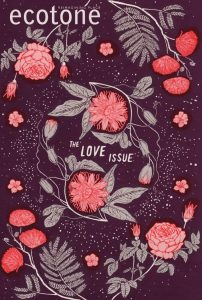
A Brief History of the Acceptable High School T-Shirts of the Late 1980s
Susan McCarty on the Exploitation of Conspicuous Consumer Desire
I circled the Vuarnet store in SoHo twice before entering, self-conscious for a variety of reasons: on one level, for instance, I knew I was too old to be shopping there. It wasn’t a holdover of the brand since its general disappearance after its peak in the 1990s, as I had imagined it—a lone flag of consumerism planted for 30 fractious years among the boutiques and bistros of Spring Street. It was new since last summer, July 2018.
And though nostalgia rides to us on waves of feeling produced by living a life, the people for whom nostalgia is actually fashionable are the young. So, A, the Vuarnet store was not really for me.
And B: complicating my adult awareness of my age (middle) and class (middle) in one of the great consumer hubs in the world were not-dissimilar feelings of otherness attached to my long-ago status as an eighth-grade girl whose parents refused to buy her a Vuarnet T-shirt.
They were too expensive, even back then, before they were $55, and my parents, hypocritical clotheshorses, were suspicious of every trend and fad I brought into our house as a request, a whine. I approached these negotiations with the calm of a gambler begging a bookie for a loan. How I needed this thing, this thing that would bring me never-ending joy, and which would make my life whole and complete, forever stanching my desire for things. The ways in which it would fit into the it-shaped hole somewhere deep inside me, while elevating my social status by making other children jealous of me.
Swatch; Simple skateboard sneakers; in a particularly embarrassingly moment of brand-blindness: Coca-Cola clothing during the height of the divestment movement, just before apartheid was abolished in South Africa; and T-shirts. So. Many. Fucking. T-shirts.
Before Instagram or Snapchat or whatever social media scourge is currently striking fear in the hearts of parents everywhere, you expressed yourself by wearing T-shirts approved by members of the in-group. While there was no formal dress code in my public junior high school in Iowa in 1989, there was the informal Midwesterner’s uniform: sneakers, jeans, T-shirt. In summer, sub shorts for jeans. Repeat.
There were few deviations from this uniform and those deviations were strange. For some reason, the parents of the girls of Northwest Junior High sometimes let them wear boy’s boxers in place of actual pants. My best friend and I, gawky and strange and desperate to be interesting to anyone but each other, owned two pairs of personalized jeans we’d made together. Mine were bleached up to the thighs, cut off at the left leg at the bleach mark, and cuffed like the jean shorts they half were. Her pair looked the same except they were cut off and cuffed at the right leg.
When we stood next to each other, you got the impression of one complete pair of jeans. I suspect we were inspired by those best-friend necklaces, popular at the time, sold in pairs, each necklace one half of a heart broken down the middle (by what exactly? In our school, which gathered students from miles out, in the rural reaches of the county: distance. In those days before social media, I could never get enough of my friends ten or more miles away. We tied up the family phone late into the night, except for those of us lucky enough to have parents who begrudgingly sprang for teen lines).
When we wore these jeans, often on the same day, prearranged the night before by cordless telephone, we looked like girls in full-leg casts, girls who had been in terrible, symmetrical accidents. This variation in the lowers, the potential weirdness, was certainly only possible because of the militaristic predictability of the uppers: the eternal, martial T-shirt.
You couldn’t, of course, just wear any T-shirt and expect it to be okay. In junior high there was a relatively small band of acceptable shirts one could wear without fear of humiliation or alienation (the former being more immediately painful but perhaps more desirable, as it indicated attention and care directed toward one’s person, even in the negative).
My parents would not buy me a Ron Jon T-shirt then and they would not buy me Vuarnet T-shirt later and I could not afford either on my own.
A partial list of acceptable T-shirt brands, 1988–1990: Ron Jon Surf Shop, Hard Rock Cafe, Big Johnson, Hypercolor, Esprit, OP, MTV, Guess, the Teenage Republicans Club of West High School (the words peace through strength above a drawing of a peace symbol with a missile—nuclear? one assumes—in place of the icon’s middle leg. A rocket dick, if you will, like the Oldsmobile logo of the same era), Big Wave Dave’s Surf Shop.
In other words, there was a small band of options wherein you were still wearing the peer-approved uniform but also expressing something you found to be important about yourself (that you, for instance, really loved surfing, despite the fact that you had spent your entire life in Iowa). Though we couldn’t have named it then, exactly, mostly what these T-shirts were expressing about ourselves was that our parents had the money to spend on expensive branded T-shirts we’d quickly outgrow.
Or, more opulently, and before online shopping, that our parents had the money to take us to one of the few exotic locales from which we could procure one of these expensive T-shirts. For T-shirts from Hard Rock Cafe and Ron Jon Surf Shop you had to actually go to Cocoa Beach, for instance, or Los Angeles.
And my parents did take us to Cocoa Beach, every spring break for years, because that was near where my grandparents lived. We could afford this only by bunking with them in their double-wide trailer in Melbourne (a flatulent exurb of the insatiable Disney empire, which seemed to have eaten more of Florida upon each return), the seven of us somehow managing not to murder each other year in and year out. For my grandfather, an Army man, and my grandmother, who had weathered the depression with her family in a tiny cabin up a holler in the hills of Tennessee, James Agee–style, this may not have seemed like much of an imposition.
And for the kids, of course, it was camp. But my parents were often stretched beyond their patience, which, since the birth of the twins, had not been particularly elastic anyway. Whether it was the cost, or a particular malevolence toward their exasperating children by the end of a week in Melbourne, they balked at buying a T-shirt for their nonsurfing, pale, bespectacled and bookish daughter. I begged. They dug in. This would be the hill they died on, over and over and over again.
They would not buy me a Ron Jon T-shirt then and they would not buy me Vuarnet T-shirt later and I could not afford either on my own. Instead, with my babysitting earnings, at substantially cheaper cost, I eventually made the following T-shirt purchases: 1) A classic ACT UP T-shirt: black background, pink triangle over the words silence = death, which evoked both the murder of homosexuals in the Nazi death camps, and the murderousness of Reagan-era policy toward AIDS and its early victims in urban gay communities.
2) A Rastafarian T-shirt with a drawing of a red, yellow and green Africa that metaphorically sang “One Love” at you in Bob Marley’s voice, and which I wore on stage at the eighth-grade talent show while literally singing John Lennon’s “Imagine.”
That I knew absolutely nothing about the political implications of these T-shirts is a given (though in the case of the Rasta shirt, I at least sensed a sort of thematic unity, however wrong-headed, with Lennon’s peaceful white vision of a world united in supplication). That none of the teachers or other adults in my life seemingly knew anything either still surprises me, but then, this was what life was like in white middle America before the internet.
When I ask my mom about this era, she doesn’t have any particular memories of my deprivation, no recollection of my accidental politics when I tell her about the shirts. But she has a request: “Don’t tell me you took drugs.”
Mom, I didn’t take drugs.
Not in junior high. Drugs would come later, as new methods of differentiation began to make themselves known. Sex was another. As it turned out, you could do things to and with your body beyond draping it in T-shirts that made other people have strong and interesting feelings about you.
But in eighth grade, most of us were not quite yet smoking weed or fucking each other. Like the larger world—three years out of Chernobyl, as Perestroika began to fail—we were on the brink. And on this brink, we wore T-shirts and wrote notes, asking each other to please check a box:
___ I will go out with you.
___ I will not go out with you.
___ Not sure.
I’m not sure what it was about the Vuarnet shirt, of all the shirts I could not have, that makes it stand out in memory, except maybe that it was a French brand, and I, with a poster of the Eiffel Tower in my bedroom and two semesters of beginning French (taken with a teacher who had escaped Ceaușescu’s Romania only to wind up at a junior high in eastern Iowa where seventh graders made sport of getting her to cry during class), loved the idea of France, which was really the ideas of romance and sophistication (and later, I would learn, colonialism), which were really the dream of leaving the place where I was: a school without windows, designed by a prison architect, in a fluorescent box of a classroom where Aaron McClure sang an obscene song called “The Coconut Tree” and Mrs. Popa, ghosts in her eyes, put a hand to her head and shuddered silently.
*
I circled the Vuarnet store twice and, like a line from a spell, the third time, I went in. The shop was manned by two extremely good-looking young adults. The woman who helped me bubbled out of her denim and plain faded black T-shirt in a style I have come to think of as Kardashian. I felt compelled to explain why I—clearly out of place—was there: I had always wanted a Vuarnet shirt.
I was going to write an essay about the experience. She brightened up, game and happy to help me with what I nonetheless worried must have seemed like a sort of pathetic and weird middle-aged quest. She showed me shirt after shirt, which I tried on behind the gappy white curtain in the corner of the store.
What to say about the sad facts of the dressing room? That the 42-year-old me realized, too late, that I was expecting to see the 12-year-old me in the mirror? That the size women’s medium I tried first proved to be intensely optimistic? That the size I ended up with, the size that draped more or less correctly, with the oversized flap of sleeve that knifed out widely above the elbow, was a men’s large?
But more than the physiology of that dumb optimism, and the equally dumb but present seed of shame (thanks, patriarchy!) because my 42-two-year-old body (which had, one year earlier, miraculously carried and birthed my first child) did not look like my pre-pubescent 12-year-old one, was the memory of all the knobby elbows of all the eighth-grade boys on which I had ever crushed. Those sunken chests and the puka-shell necklaces on them haunted the corners of the dressing-room mirror.
And me, I guess I wanted to look like them in my Vuarnet T-shirt. But what the hell did that mean? Reader, I spent a lot of time in that dressing room and felt many feelings. When I walked out to make the purchase, the store Kardashian gave me a little yay and said she was happy they could help me live out a dream. I immediately regretted the purchase, a regret which has grown and blossomed since, but at that point there was no going back.
I have always loved clothes, and by that I mean I have always spent a lot of time shopping for, buying, desiring, and reading about clothing. I have, without examination, thought of myself this way: as a lover of clothes. But am I? According to the amount of time and money I put in: yes. But when I look closer, attempt to feel out different metrics, what’s there? I have no particular love of my individual pieces of clothing. I desire to look, generally, thin-ish, young-ish, stylish.
I want clothing to impart to me a kind of timeless dignity, by which I mean it should somehow simultaneously and agreeably display and negate my femaleness and my age. It shouldn’t cling or yell or be too obviously of a particular era. It shouldn’t show the outlines of my underwear. It should disguise the part of my body the boys in Vuarnet T-shirts used to refer to as the FUPA, the body part I now most associate with motherhood. It should (ideally) be black. Which I guess when you add it all up means what I’m really interested in is not clothing at all but a kind of misogynistic cloak of invisibility.
Which, really, is kind of the opposite of what was going on in junior high and, frankly, pretty depressing. More depressing when it occurs to me that time spent online, shopping and scrolling through Memorial Day sales at Madewell, is time my brain spends not having experiences, not making memories. Not writing books. Not hanging out with my delightful toddler. And then I hit that awful figure: that the world produces at least 80 billion garments annually, and it all gets downright nihilistic.
In order to think more carefully about my things, about how and why I buy them, I have been trying to feel my way toward a locus of desire each time.
My internalized misogyny threatens to choke the rivers and streams! My internalized misogyny prefers the high waists and wide legs in fashion these days. Even my internalized misogyny knows I do not need another short-sleeved sweatshirt. How is my internalized misogyny still ALWAYS surprised when the shirt doesn’t look on me like it looked on the model?
Philosopher and cultural critic Roland Barthes (who was—true story— killed by a laundry truck) wrote a lot about fashion. Before there was Mad Men or first-year comp class to point out the now-obvious ways consumers are manipulated by brands, he posited that a piece of clothing goes through a kind of transfiguration, from real (a manufactured thing) to represented (on the website, on the beautiful model) to used (straining at my hips as I shimmy it on). This encourages us to think about a piece of clothing as a material thing with environmental cost and as an idea we hold about ourselves and the world.
It helps us understand the way our desire for things can feel intrinsic, individual, special while being completely . . . well . . . not those things. Maybe it can also help explain the contradictions—how and why we allow ourselves to be seduced over and over again, even when we know better.
In order to think more carefully about my things, about how and why I buy them, I have been trying to feel my way toward a locus of desire each time, with each purchase. Why do I want this? What feelings will it bring me, and are those feelings worth the price of ownership? Does it fulfill a need?
What I’ve been finding, at least about myself, is that I am so overwhelmed by the rhetorics of desire and satiety that reach us through advertising and Instagram posts that it is sometimes really hard to pinpoint my actual feelings about things, which flare briefly, only to be quickly plastered over by received cultural ideas about treating ourselves, about living our best lives, about success. The advertising I’ve been surrounded by my entire life has, unsurprisingly, quietly colonized me.
Though perhaps not entirely: as a colonial subject, I should have found the experience of buying a Vuarnet T-shirt extremely satisfying. To finally fulfill a two-decades-long consumerist dream. But instead, when I thought carefully through the experience, there were only sites of conflict and a vague resentment that, although the intervening decades have brought us magnificent technological advances in cotton manufacturing, the shirt I ended up buying wears like a paper grocery bag.
About that manufacturing. It was only when I got it home that I noticed the shirt had a made in honduras tag: another disappointment. For some reason, I guess I had imagined Vuarnet continued to exist all these years untouched by the goblin of globalization and that the T-shirt’s rough-hewn feel was a testament to the 20th-century French factory from which it had come. But no—instead it seemed likely the shirt was the product of a maquila.
In a May 2019 report on women’s rights in Honduras, the United Nations Hu- man Rights Council notes the following about maquilas:
In the maquila sector, concerning the delocalized manufacturing of garments, and where labor rights violations have been widely reported, workers are predominately women: they are therefore predominantly affected by the work hazards of the sector, including repetitive physical tasks that, when carried out over an extended length of time, lead to physical strain and injury . . . . Rural women’s travel to urban areas in order to perform this work can cut them off from extended family networks and other forms of social support.
In addition, in a country where violence against women is an ever-present reality, travel to and from work before and after a long shift places maquila workers’ personal security at risk Employees often suffered from harassment, exploitation, psychological pressure based on high production objectives, longer working hours, few resting times, little time to eat and no access to drinking water.
Here is what Vuarnet’s parent company had to say about the origin of the T-shirt when I emailed them about it:
In Tell Me How It Ends: An Essay in Forty Questions, author Valeria Luiselli, who served as a translator of undocumented children’s migration stories for federal immigration court during the Obama era, tells the story of Manu, a child migrant from Honduras whose best friend has been killed in front of him. Luiselli sketches out the United States’ involvement in the escalation of gang violence in Central America, and the decades of foreign policy that have supported militaristic regimes in the region.
Hondurans, crushed by these depredations—their government, their poverty, the gangs that stalk or kill their children—migrate north to seek asylum. If they are not murdered in Mexico (Luiselli, writing in 2016, notes that since 2006, 120,000 migrants have disappeared traveling through Mexico), they make it to the U.S.–Mexico border where, as I write in 2019, they may be held in borderland structures that many historians and Holocaust survivors and Wikipedia agree may be accurately called concentration camps.
If they came with children, those children may have been taken away from them and put in camps called tender age facilities, which have been set aside specifically for the care of infants and toddlers forcibly separated from their families.
The next T-shirt I buy may have been sewn by a traumatized migrant. As of summer 2019, the nonprofit North American Congress on Latin America reports, the Mexican government has opened new avenues toward manufacturing: Central American asylum seekers are now held in migrant centers in maquiladoras (Mexican maquilas), where they may return to the indignity of their old jobs while waiting to hear whether or not they qualify for asylum, or, one imagines, the privilege of seeing their children again.
Assuming their children are still alive. Here is a headline from Rolling Stone on June 22nd, 2019: “Lawyers Forced Border Patrol to Hospitalize Four Severely Ill Migrant Toddlers.”
*
It was a mistake that I bought those other, earlier T-shirts—I didn’t know what they meant. But now that I’m a middle-aged adult, my values align more closely with those shirts than they do with the nouveau-consumerism of the Vuarnet T-shirt, which signifies nothing. Then again, as I am a middle-class U.S. citizen whose consumer choices cause harm, perhaps the Vuarnet T-shirt is more representative after all.
Maybe the Vuarnet shirt gives me no pleasure because the world to which it belongs is one of the unfettered and uncomplicated longing that belong to my childhood.
Systems of material and meaning churn on, and two blocks away, a panhandler named Michael sits on a Broadway street corner holding a sign that reads ashamed. He’s ashamed because he once accepted $20 from a junior-high kid. “If that’s how you want to spend your money,” said the kid’s mom as they walked by Michael’s corner, and the kid dropped the bill into his cup.
To Michael, it didn’t look like the kid had much money, but Michael didn’t give the money back. Instead he made the sign—ashamed—and the story, which he told to people, like me, who stopped to ask and to drop more money in the cup, bills he scooped out and pocketed as soon as they hit the bed of pennies that kept the cup kissing the ground.
I feel self-conscious talking to Michael. Seeing him produces in me a shame, different from his own self- proclaimed shame, different from the shame of my body in the dressing room, different from the shame one may feel from shopping conspicuously in this part of the world, which has been built for just that activity—shopping bags hanging from elbow crooks braying affinities, class. I feel the shame of someone who is assuming the posture of being above it all.
If I talk to this man, it will somehow absolve me of being down here and spending my money and enjoying the thing I am doing, which I call research but which is indulgence. I pay Michael for his story and he gives me what I want, which is words that will look nice inside this essay. This is what the money does: we encounter others through veils of privilege and need and exploitation, transactionally, and it is maybe impossible to actually see each other.
Michael and his story are also part of the system, one that arrests consumers in the midst of consuming and generates shame, which, in turn, and under the guise of his shame, generates income for Michael and momentary absolution for us. His sign conjures it, our money indulges it. Allows us, perhaps, to continue on our way to do more harm. Isn’t UNIQLO just a couple of blocks that way?
Maybe the Vuarnet shirt gives me no pleasure because the world to which it belongs is one of the unfettered and uncomplicated longing that belong to my childhood. Those other T-shirts—the ones that spoke of blood and safe harbor, of annihilation and oppression—they were the right ones because they made demands, they asked for something: for witness, for action, or even just for acknowledgment that this is the world we live in, a world beyond French ski champions and the anxiety of influence exerted by the eighth-grade culture machine.
*
When I first read the news of the family separations, I was nursing my daughter in bed, topless and tired. My husband watched from his corner to make sure I didn’t fall asleep and smother the baby. Supposedly, motherhood had refashioned my body into a sexless place: the mother’s body under patriarchy is denied eros. Fat Upper Pussy Area. But, like so many other received notions, that was a lie: the baby and I were nothing but eros. The endless hours of nursing and napping skin-to-skin, the way her body became better known to me than my own. This new identity was entirely embodied-need and desire.
We sat in the bedroom and our iPhones vomited the reports. I read them and then—I couldn’t help it—I imagined the feeling of an Immigration and Customs Enforcement agent taking my baby’s body out of my arms. My own body convulsed in terror and pain. I howled like an animal. Had I ever truly clutched anything before? I clutched the baby. My husband was alarmed.
How do I remove myself from the Venn diagram of harm made at the borderlands of Mexico and the United States?
“No one is going to take her,” he said, but that wasn’t the point. The point was that as I sat in the safety of my mortgaged home and imagined the unimaginable, the unimaginable was happening: babies like her had been taken out of their mothers’ arms in this country on this very day and not given back. I wondered whose body could stay upright in the face of this news. Mine was fat and sore and I had been trained my whole life to find its state at this moment disgusting—the jiggling arms as I sobbed, the pouch of my belly rolling with fear.
As ICE agents took children from their mothers, I had been sitting in my house Googling “best belly band shrink hips.” Weeks later, as I stood in front of my full-length mirror, trying on pants and feeling bad about myself, I would hear a ProPublica recording of children in a detention center sobbing for their parents. “Mami,” cries a toddler. “Papi,” says a boy, over and over, in a low, traumatized voice. I couldn’t stop listening, though in doing so, I felt deeply ill. It was my responsibility to listen, wasn’t it? Wasn’t this the least I could do? I wondered who could hear those children and do nothing for them, as I stood there, surrounded by my wardrobe, and did the least I could do.
Maybe writing an essay about buying a Vuarnet T-shirt is the least I can do. Where does my complicity begin and end? How do I remove myself from the Venn diagram of harm made at the borderlands of Mexico and the United States? How do I solder this essay back together with the humor it promised you so extravagantly from its beginning?
Things are ideas before they are things: beauty, acceptance, popularity, status. We desire the things we are trained to believe will reify those ideas and help us, finally, belong in our own lives. Things help us become the idea(l) of ourselves. They help us constitute ourselves. Barthes wrote, “Man has dressed himself in order to carry out a signifying activity.” I am because I dress; I dress because I am.
That’s why it can be so hard to see the thing itself and what’s attached to it—the garment I purchase to hide my puffy body and the memories it indulges, the labor that produces it, the suffering, which seems to ripple outward to encompass Michael and his shame, the shop worker at a boutique full of scratchy T-shirts and plastic sunglasses that brays its neon nostalgia out of the storefront of one of the most expensive real estate markets in the world, the worker who pressed the logo onto my shirt, and the stream of asylum seekers who risk their lives to enter the United States, who are detained in camps, whose stolen children are possibly already lost forever to this country’s dark currents and borderless appetites.
__________________________________

Susan McCarty
Susan McCarty is the author of Anatomies, published by Aforementioned Productions in 2015. Her stories and essays have appeared in Conjunctions, the Iowa Review, Utne Reader, and other journals. She teaches literature and creative writing at Oakland University and lives in Ypsilanti, Michigan.












